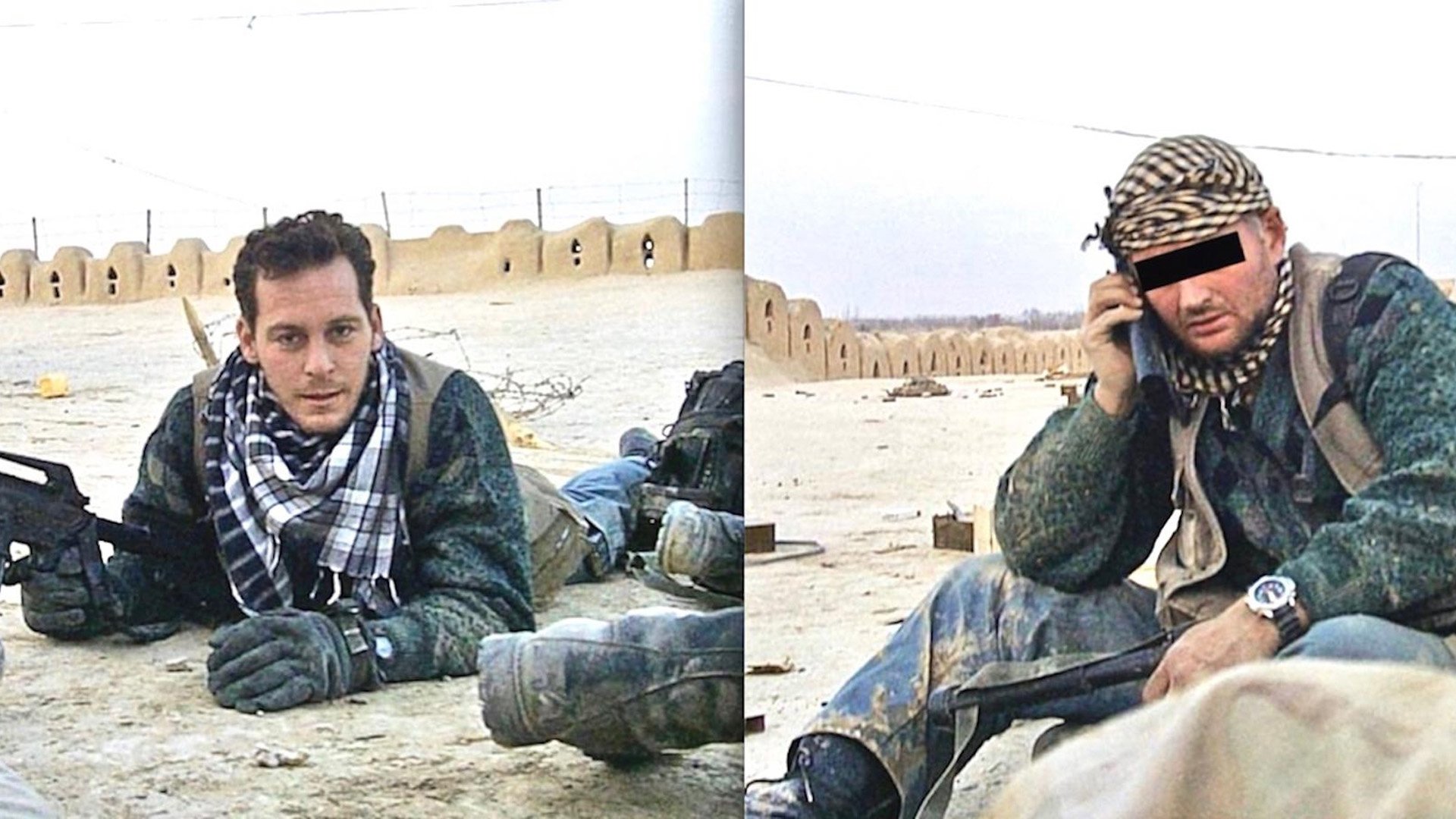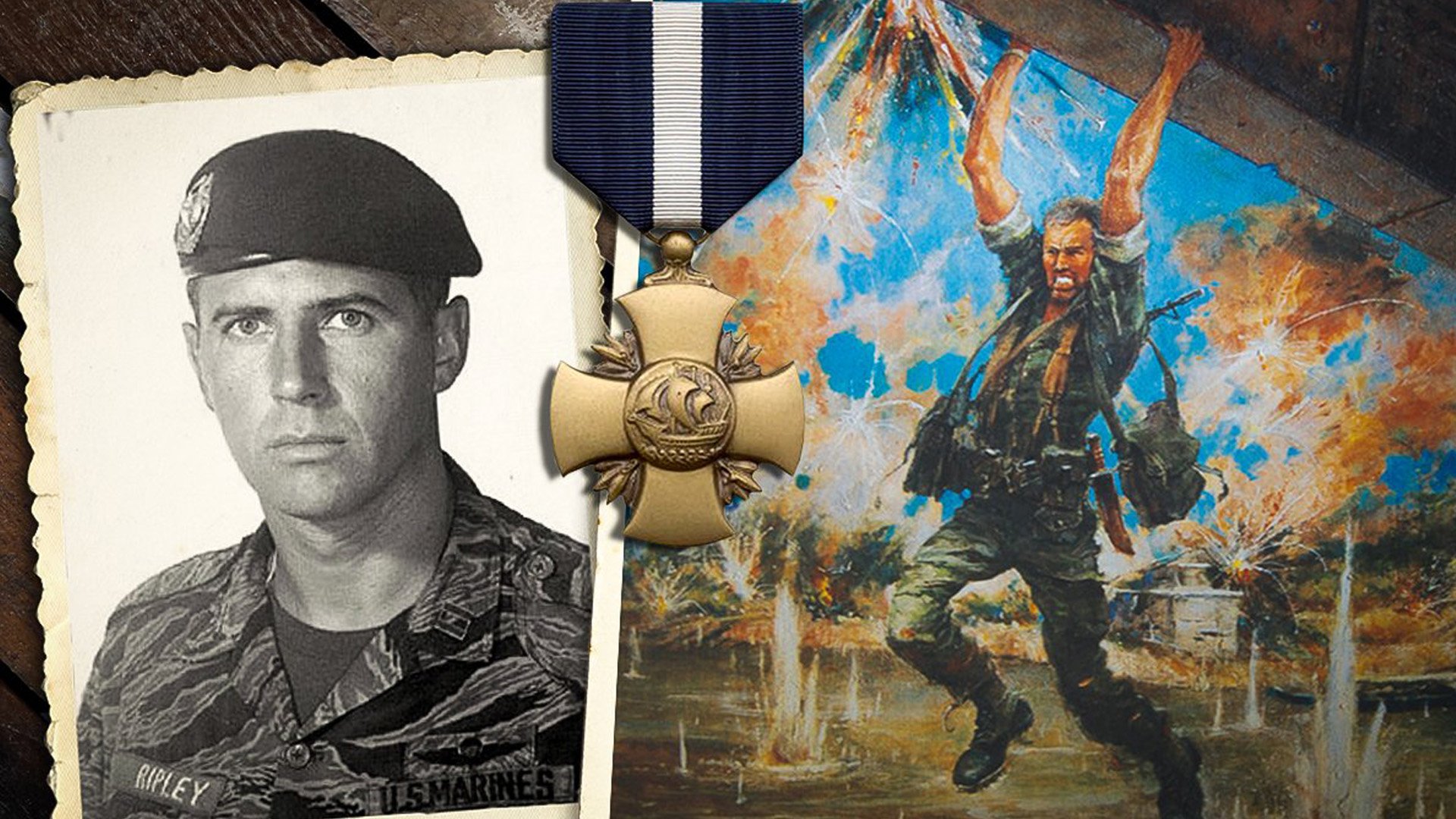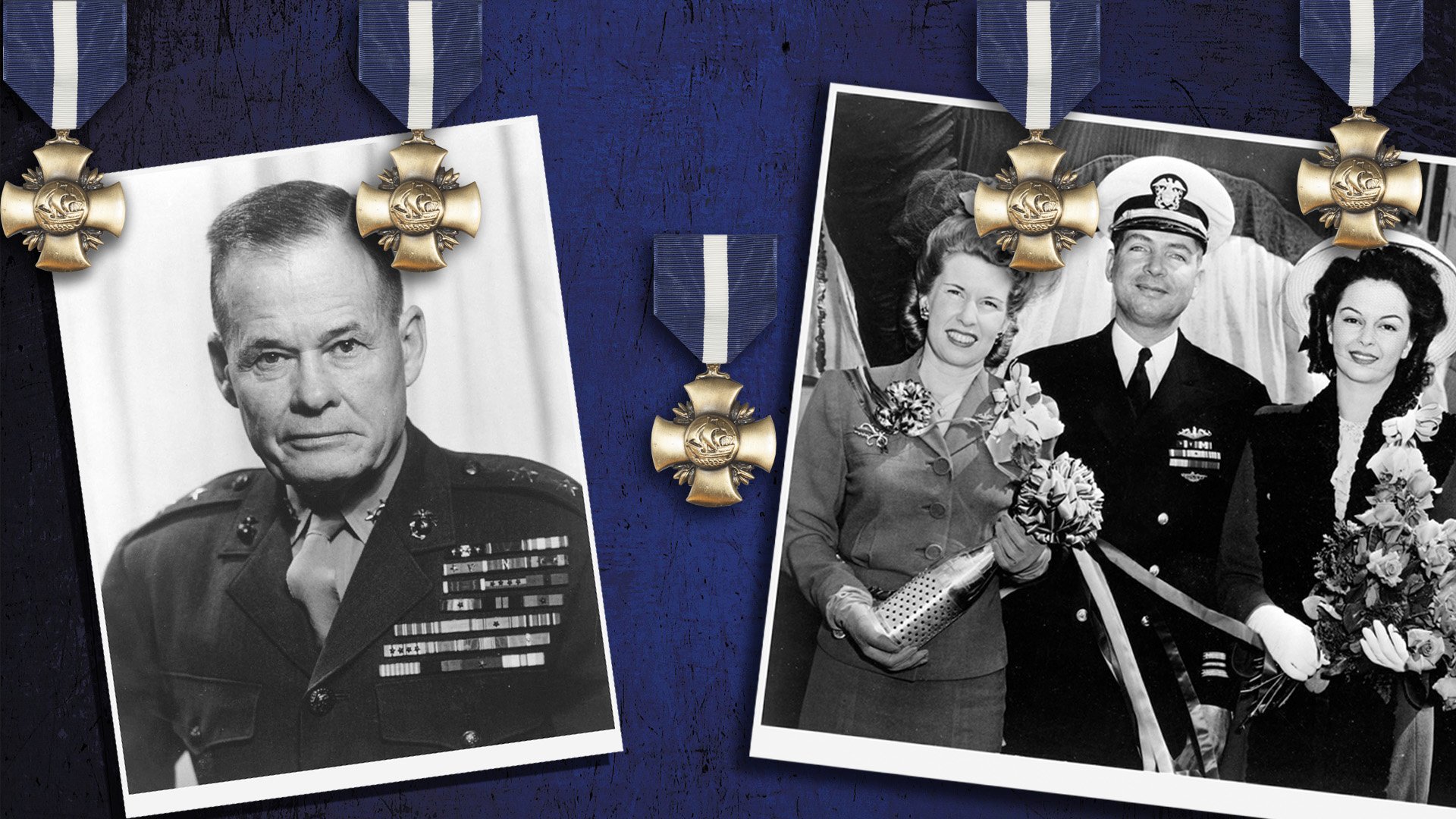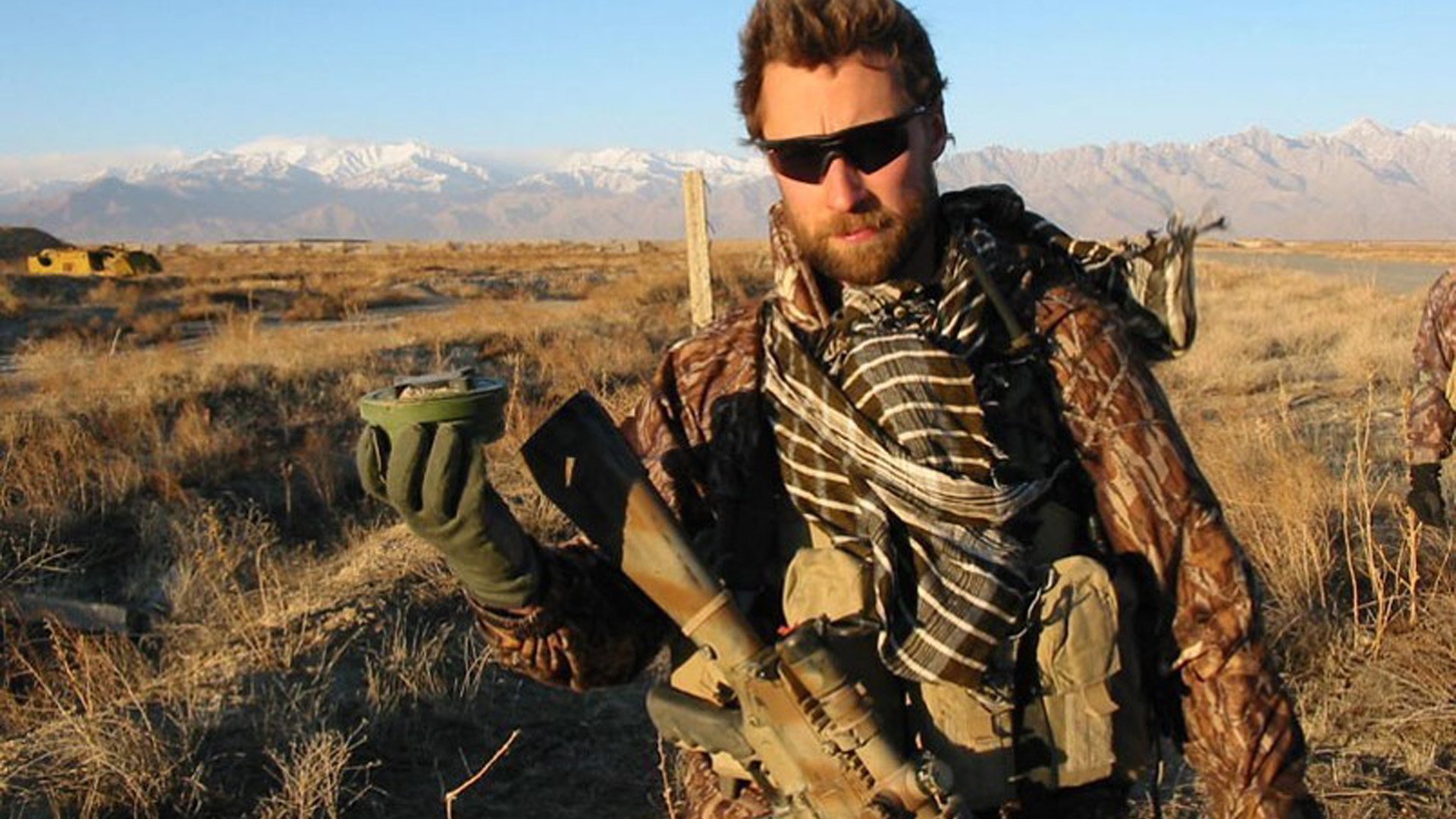
From left, Marine Capt. John Ripley, Navy SEAL Chief Stephen Bass, and Lt. Gen. Lewis “Chesty” Puller are all recipients of the Navy Cross medal. Composite by Matt Fratus/Coffee or Die.
On Nov. 25, 2001, a coalition of US and British forces were dispatched to the Qala-i-Jangi fortress in Mazar-i-Sharif, Afghanistan. The al Qaeda fighters being detained at Qali-i-Jangi had just revolted and gained access to the fort’s weapons depot. Two CIA officers were trapped somewhere inside.
The first element of the rescue team to reach the objective included US Army Green Berets, British Special Boat Service commandos, and US Navy SEAL Chief Petty Officer Stephen Bass. They were met by a barrage of small arms fire, mortars, and rocket-propelled grenades. A battle ensued.
As bullets flew, Bass and four of his comrades broke contact and maneuvered across a minefield to enter the fortress. Once inside, the team established radio contact with one of the two missing Americans — CIA case officer David Tyson. But despite their best efforts, they were unable to reach him. Eventually, after killing several al Qaeda fighters, they managed to occupy one of the fortress’ towers. Fearing they might be overrun, a Green Beret directed the F-18s circling overhead to strike the area immediately around their position with 500-pound JDAM bombs.

Chief Petty Officer Stephen Bass, left, was awarded the Navy Cross for venturing alone into an unsecured section of the fortress against numerous al Qaeda fighters to locate CIA paramilitary officer, Mike Spann, who was killed early on in the prison uprising. Spann would be the first American killed in the Global War on Terror. Photos courtesy of Reddit.
As darkness fell, the team shifted their focus to finding the other American, a CIA paramilitary officer named Mike Spann. While his teammates plotted their next move, Bass, on his own initiative, ventured alone into the heart of the fortress. According to the book First Casualty: The Untold Story of the CIA Mission to Avenge 9/11, Bass reached a roof occupied by four Northern Alliance fighters and helped them defend their position.
After expelling nearly all of his ammunition, Bass picked up the AK-47 rifle of a dead Afghan ally and continued to fight. He fought until he successfully verified the condition and location of the missing operative, whom he observed lying motionless underneath the bodies of dead al Qaeda fighters. Unbeknownst to Bass at the time, Spann had been killed shortly after the prison uprising began.
As a result of his actions, Bass became the first SEAL awarded the Navy Cross since the 1989 American invasion of Panama. The medal — the Navy’s second-highest honor behind the Medal of Honor — was created in 1919. Since then, it has been awarded to service members in the US Navy, Marine Corps, and foreign allies for actions in combat and during high-stakes underwater rescue missions. Here is everything you need to know about the Navy Cross.
Related: Marine Raider Awarded Navy Cross for Rescue Attempts in Cave Battle
Who is Eligible For the Navy Cross?

Sgt. Clifford Wooldridge, combat weapons instructor, Marine Corps Security Forces Regiment, Chesapeake, Virginia, stands at parade rest after receiving the Navy Cross Medal, May 18, 2012, at Lance Cpl. Torrey L. Gray Field. He earned the medal for combat actions in Helmand province, Afghanistan, while attached to 3rd Battalion, 7th Marine Regiment, in 2010. US Marine Corps photo by Lance Cpl. Ali Azimi.
The Navy Cross is typically awarded to sailors, Marines, and members of the Coast Guard operating under the authority of the Navy. In terms of criteria and prestige, it is equivalent to the Army’s Distinguished Service Cross and the Air Force Cross. According to the Department of Defense, the following criteria must be met to be considered eligible for the Navy Cross:
- Must be engaged in action against an enemy of the United States;
- Must be engaged in military operations involving conflict with an opposing foreign force; or
- Must serve with friendly foreign forces engaged in an armed conflict against an opposing armed force in which the United States is not belligerent.
In its current form, the Navy Cross is exclusively intended to honor heroism in combat, but that wasn’t always the case. In 1939, for example, 46 service members were awarded the Navy Cross for their participation in the harrowing operation to rescue the crew of the USS Squalus when it sank off the coast of New Hampshire.
Several non-Americans have also received the medal, including service members from Australia, Britain, and New Zealand. During the Vietnam War, a South Vietnamese commando named Trần Văn Bảy helped Navy SEAL Lt. Tommy Norris rescue a pilot who was shot down behind enemy lines. Bảy was the only member of the Army of the Republic of Vietnam ever awarded the Navy Cross.
Related: ‘Hold and Die’ — The Marine Who Became a Legend on Easter Sunday
Famous Recipients From World War II to Vietnam

John Ripley singe-handedly planted explosives on a bridge while under fire to stop a Vietnam offensive. Composite by Kenna Lee/Coffee or Die.
Some of America’s most venerated war heroes were awarded the Navy Cross. On Dec. 7, 1941, Navy mess attendant 2nd Class Doris “Dorie” Miller defended the USS West Virginia during the Japanese attacks on Pearl Harbor by operating a .50-caliber machine gun until he ran out of ammunition. During the Korean War, Maj. Kurt Chew-Een Lee managed to clear an enemy outpost by ordering, in Chinese, for its defenders to retreat. In Vietnam, Marine Capt. John Ripley successfully halted a North Vietnamese Army offensive by single-handedly destroying a bridge with demolitions while being shot at by an enemy tank.
Related: How A Heroic Navy SEAL Helped Lead the Largest Search & Rescue Mission During the Vietnam War
Marine and Sailor Tied For Most Awards

Marine Corps legend Lt. Gen. Lewis "Chesty" Puller and Navy Rear Adm. Roy Davenport each earned five Navy Cross medals during their military service. Composite by Matt Fratus/Coffee or Die.
Two people hold the distinction of earning the most Navy Cross medals: Marine Lt. Gen. Chesty Puller and Navy Rear Adm. Roy Davenport. Each have five awards.
Puller earned two Navy Cross medals in Nicaragua between 1930 and 1932. The first was for leading five successful engagements against a numerically superior bandit force; the second was earned during a reconnaissance operation deep behind enemy lines, when Puller’s 40-man element thwarted an ambush by 150 insurgents.
Puller was awarded two more Navy Cross medals for his actions in World War II. One was for actions in the dense, rain-soaked jungles of Guadalcanal, where his Marines held the line against a massive Japanese assault for three hours before reinforcements arrived. The other was on the Island of New Britain, where he led his men in capturing a heavily defended objective during the Battle of Cape Gloucester.
Puller’s final Navy Cross was earned in the Korean War. In December 1950, Puller’s 1st Marine Division repelled multiple attacks aimed at breaching the rear sector of his unit. Puller braved heavy machine gun and artillery fire to move among his troops and effectively coordinate the defense of the perimeter and evacuate the wounded.
Davenport received all five of his Navy Cross medals for actions in the Pacific during World War II. He earned three of them in six months while serving as the skipper of the USS Haddock submarine. The citation for the first covers the period between June 30 and Aug. 10, 1943, when Davenport fired approximately 15 torpedoes in four separate attacks to sink a Japanese transport ship. Then, in September, during a 27-day war patrol, Davenport engaged four different Japanese warships, sinking three vessels while evading counterattacks.
On his seventh combat patrol, Davenport’s crew destroyed a freighter and caused another ship to catch fire, earning him his third Navy Cross medal. He earned his fourth as the skipper of the USS Trepang submarine, when his crew sank three ships and damaged a Yamashiro-class battleship. His final award was for a mission in which he led a wolfpack of three submarines that took out four enemy warships.
Related: The Story Behind Chesty Puller’s 5 Navy Crosses and 2 Other Major Valor Awards
The Secret Medals of the GWOT

Navy SEAL Britt Slabinsky was originally awarded the Navy Cross during the Battle of Takur Ghar in March 2002 while serving in Afghanistan. It was upgraded to the Medal of Honor in 2018. US Navy photo.
In 2016, USA Today revealed that two Navy Cross medals and more than 110 Silver Stars had been secretly awarded for actions in the Global War on Terror.
The first Navy Cross was earned by an unidentified SEAL in Afghanistan in 2009. According to records obtained by USA Today, on Aug. 9, 2009, the SEAL’s outpost came under attack and one of his comrades, a medic, was wounded by an enemy sniper. The SEAL dragged his teammate to safety just as a rocket-propelled grenade struck the outpost’s weapons depot, sparking a fire that threatened to cause a catastrophic explosion. The SEAL ordered his men to evacuate the base and then proceeded to haul crates of explosives, including “smoldering and undetonated warheads,” out of the fire with his bare hands. He made several trips to dump the explosives in a nearby river, all while under heavy enemy fire.
The second Navy Cross went to a Marine for responding to the 2012 embassy siege in Benghazi, Libya. The citation doesn’t detail the Marine’s actions but credits him with preventing further loss of life during the attack that claimed the lives of Ambassador Christopher Stevens and three other Americans.
Read Next: What It Means to Be a Navy SEAL, According to 5 SEALs

Matt Fratus is a history staff writer for Coffee or Die. He prides himself on uncovering the most fascinating tales of history by sharing them through any means of engaging storytelling. He writes for his micro-blog @LateNightHistory on Instagram, where he shares the story behind the image. He is also the host of the Late Night History podcast. When not writing about history, Matt enjoys volunteering for One More Wave and rooting for Boston sports teams.
BRCC and Bad Moon Print Press team up for an exclusive, limited-edition T-shirt design!
BRCC partners with Team Room Design for an exclusive T-shirt release!
Thirty Seconds Out has partnered with BRCC for an exclusive shirt design invoking the God of Winter.
Lucas O'Hara of Grizzly Forge has teamed up with BRCC for a badass, exclusive Shirt Club T-shirt design featuring his most popular knife and tiomahawk.
Coffee or Die sits down with one of the graphic designers behind Black Rifle Coffee's signature look and vibe.
Biden will award the Medal of Honor to a Vietnam War Army helicopter pilot who risked his life to save a reconnaissance team from almost certain death.
Ever wonder how much Jack Mandaville would f*ck sh*t up if he went back in time? The American Revolution didn't even see him coming.
A nearly 200-year-old West Point time capsule that at first appeared to yield little more than dust contains hidden treasure, the US Military Academy said.












